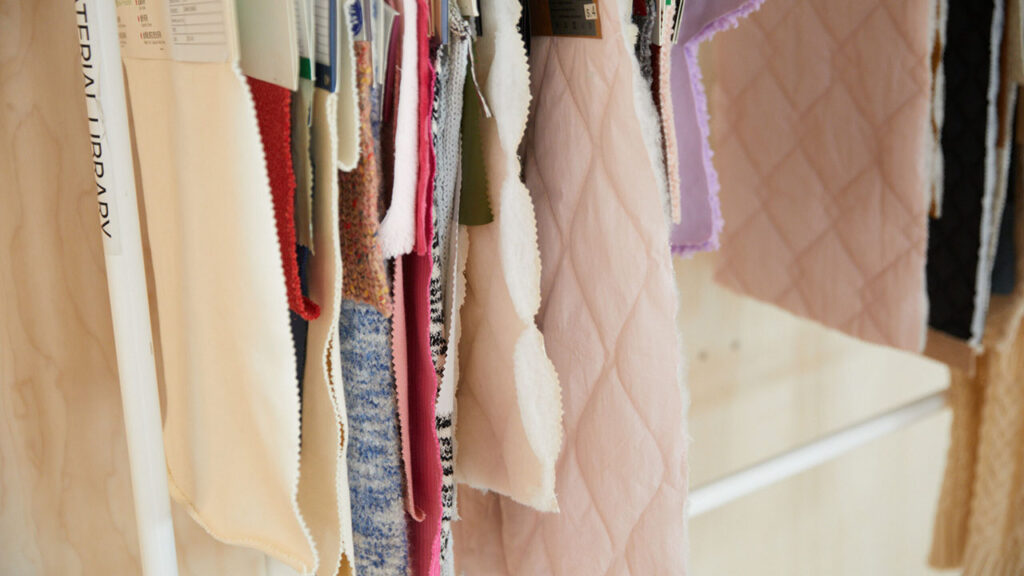Recognizing both the role we’ve played and the responsibility we have to turn things around, we constantly challenge ourselves to rethink our industry’s fabric, down to the very last thread. Learn how H&M Group’s latest recycling innovations, Looop and Green Machine, help reduce fashion’s waste problem on a global scale.
H&M Group game-changers: For a circular fashion future
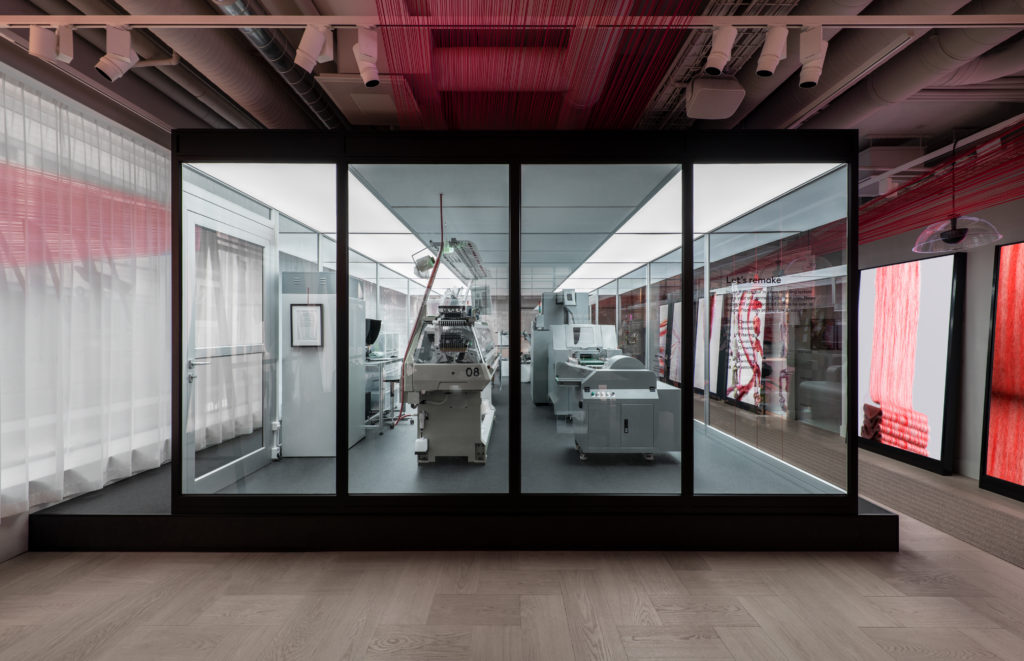
As the unceasing climate crisis looms, consumers are rethinking their consumption habits; questioning what they need and what adds value to their life. More than three in five consumers consider environmental impact a critical factor to their purchasing decisions – that’s over 60% (McKinsey & Company, 2021). Environmental issues are now more important (great), and more pressing (not so great), than ever. So, what can we do?
Recycling, upscaling, renting, reselling and repairing garments are fantastic ways to extend the life (and value) of goods and minimize waste. In 2019 alone, H&M Group collected 29,005 tons of recycled textiles for reuse through our garment collecting initiative; that makes roughly 145 million T-shirts.
Successfully recycling such quantities, though, requires the right technology. While H&M Group always looked for game-changing solutions, some textiles have been persistently harder to recycle than others.
Why?
Most clothes are made of multiple materials; fibres are often mixed to meet the garment’s needs – more stretch, fewer wrinkles, a better price, for example. Mixed fabrics are harder to separate by fibre, and consequently, harder to recycle back into new garments.
The new normal requires new technology
Finding virtuous and circular solutions to waste-related problems sits within H&M Group’s goal to use only recycled or sustainably sourced materials by 2030. So, the challenge we tasked ourselves with was to find technology that could separate recycled garments at fibre level, including blended fabrics; a solution that would allow us to use even the trickiest of recycled textiles to their fullest – down to the very last thread.
Several initiatives by H&M Group and its collaborators are already getting real-world trials. Re:newcell, the Swedish textile recycling company, for example, was the basis of the H&M Conscious Exclusive SS20 collection. A recently signed multi-year agreement with the firm will enable the group’s portfolio of brands to continue to choose Circulose®* fibres for millions of garments; a vital alternative to virgin materials like cotton, which require unsustainable amounts of land and water to cultivate.

Looop is located in H&M’s flagship store in central Stockholm. The machine is available to customers who want to recycle their old garments into new ones.
Looop – visualizing the value of textiles
Our newest eco-hero (read: game-changing recycling innovation) is Looop. Transforming old garments into fresh ones in only eight steps, Looop shows customers how something old can become something new – without the added environmental cost. The system recaptures valuable raw materials in recycled clothing and regenerates them back into fibres that are spun into new yarn and knitted into new clothes. You can see Looop in action at H&M’s flagship store in Stockholm.
“It is important to let our customers be part of our journey and to show them the value of textiles and at the same time, inspire them to prolong the lifetime of their garments. Looop is a good way to visualize that and a great forum to pay attention to H&M Group’s other recycling and repair initiatives. Looop is not the whole solution but an important part of our journey to become a circular business“, Felicia Reuterswaerd, Sustainability Manager at H&M Sweden, says.
“It is important to let our customers be part of our journey and to show them the value of textiles and at the same time, inspire them to prolong the lifetime of their garments“
Felicia Reuterswaerd, Sustainability Manager, H&M Sweden
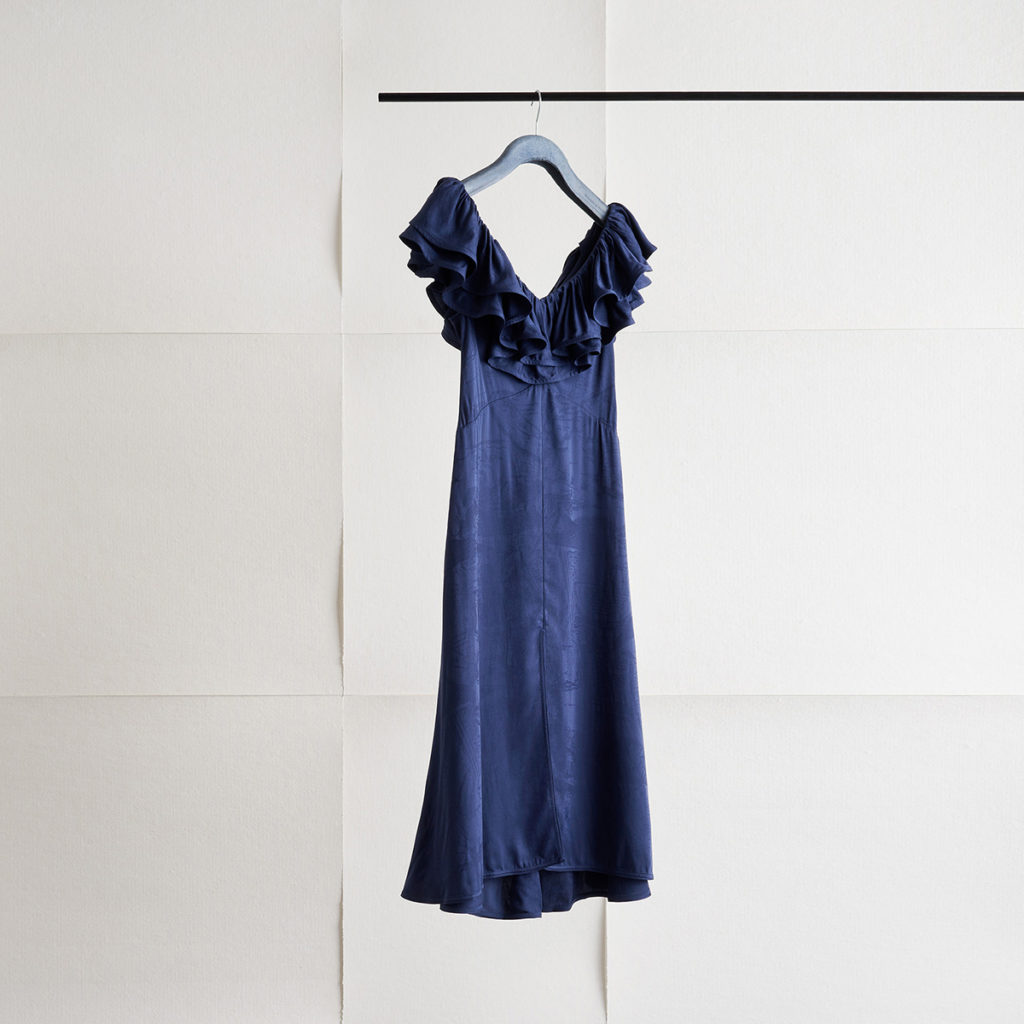
Dress from H&M Conscious Exclusive SS20 made of Renewcell’s Circulose®. Image: Renewcell/Alexander Donka

A recently signed multi-year agreement with Renewcell will enable the H&M Group’s brands to continue to choose Circulose® fibres for millions of garments. Image: Renewcell/Alexander Donka
The Green Machine – breaking barriers in production
While Looop is front and centre, (quite literally) unravelling textiles’ real value before our eyes, Green Machine works behind the scenes. This unsung hero entirely separates and recycles cotton and polyester blends into new fibres with no quality loss and at industrial scale. Born from a research collaboration between H&M Foundation, The Hong Kong Research Institute of Textiles and Apparel (HKRITA) and one of Monki’s key suppliers, the Green Machine is a real gamechanger for upcycling blend fabrics in the brand’s production.
“In order to close the loop, we need to be able to upcycle the recycled clothes at scale. That’s nothing new, but the ability to do this requires a technical revolution. The fact that we can use this machine in our production means that we can break the scale barrier and solve one of the issues that we must overcome to learn more about circularity“, Jenny Fagerlin, Sustainability and Transformation Director, Monki, says.
“The Green Machine is unique because it takes on an infrastructure challenge of getting polyester fibres more sustainably. It can separate the components of a garment without losing the quality of its fibres.“
Jenny Fagerlin, Sustainability and Transformation Director, Monki
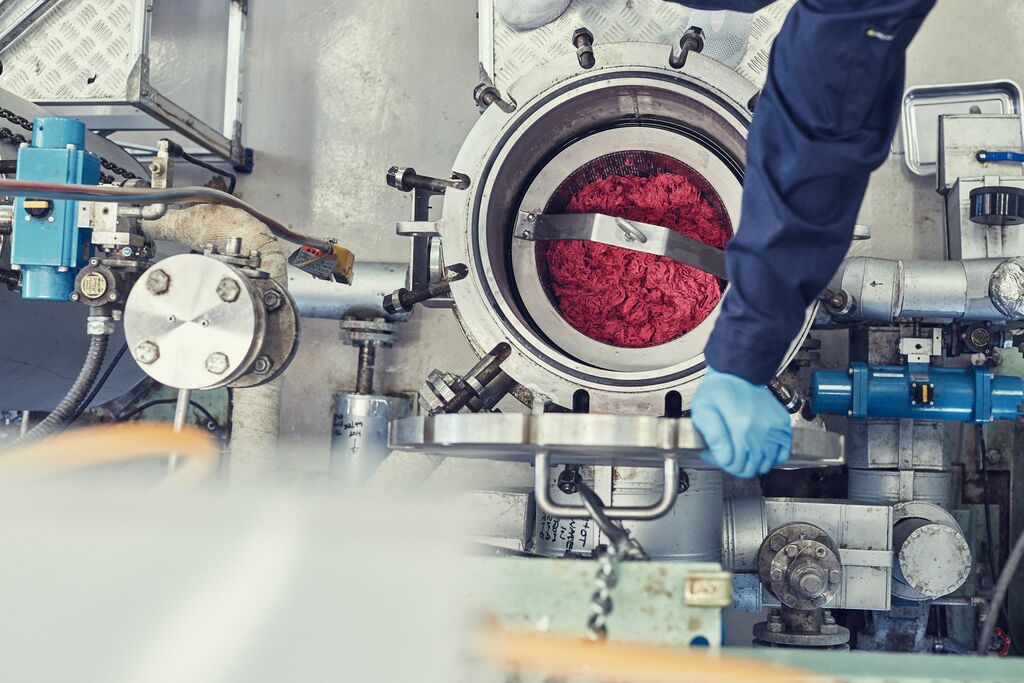
Green Machine works behind the scenes to fully separate and recycle cotton and polyester blends into new fibres with no quality loss and at industrial scale.
Accelerating the power of Green Machine
Harnessing Green Machine’s power to separate and recycle cotton and polyester blends at scale, Monki created an exclusive online tracksuit. The brand’s first collection using the system was a set that not only looked and felt good but was also good for the environment. Monki will release another online exclusive during the spring, and by fall 2021, aims to accelerate its Green Machine production even further.
“We only have one planet, and the way we are treating it today doesn’t work. Our customers are aware of that and require solutions as much as we want to lead the change. But we have to dare to confront the challenge to find a way to produce bulk collections. The Green Machine shows that we are focusing on the right things“, Jenny Fagerlin, says.
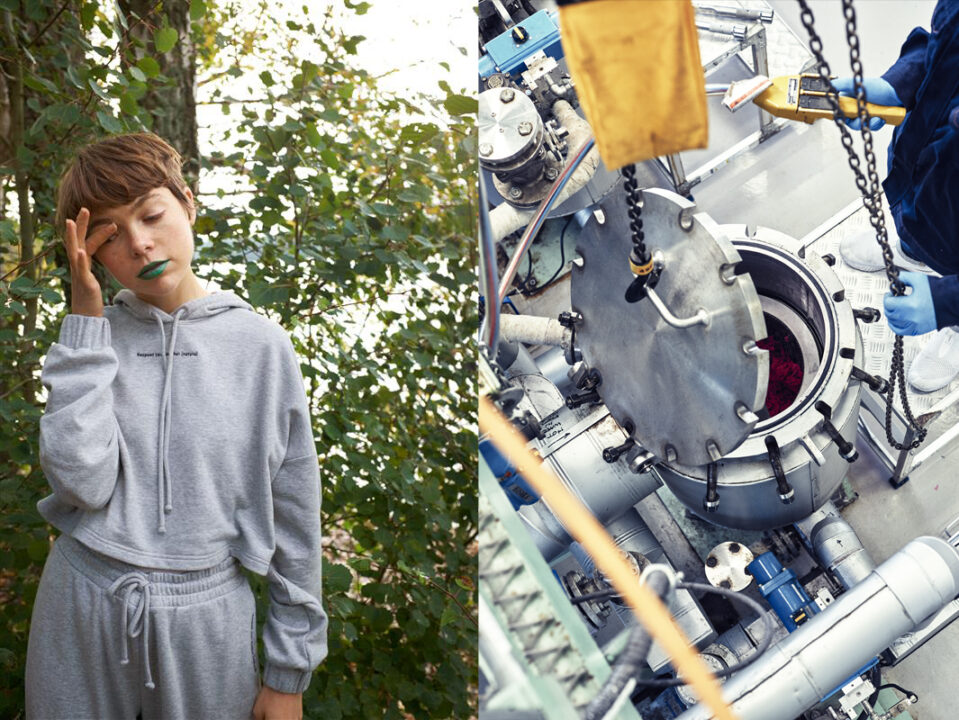
Monki’s online exclusive tracksuit from 2020 is the first result from the Green Machine.
H&M Group – circular and climate positive by 2040
H&M Group strives to become fully circular and climate positive by 2040; shifting to circular business strategies, where garments and textiles are valued, reused and recycled – again and again. We want to lead the change, using our size to drive innovation in textile recycling. By setting an example, we hope to stir change throughout the industry – inspiring our customers to keep their garments for longer and ensuring recycling textiles is both easy and accessible.
What is a fashion loop?
For H&M Group, a fashion loop means that we treat recycled materials as valuable resources by using them again and again in our whole value chain. We aim to use and reuse as many recycled materials as possible for our products so that nothing goes to waste. We see collaborating with innovators as a critical, one that allows us to discover technology that can maximize the ability to upcycle materials.
*Circulose® is a material made from unusable textile waste, developed by the Swedish textile recycling company Renewcell. Garments that are made of Circulose® cut waste, climate, water, microplastics and deforestation fashion footprint to almost zero.
